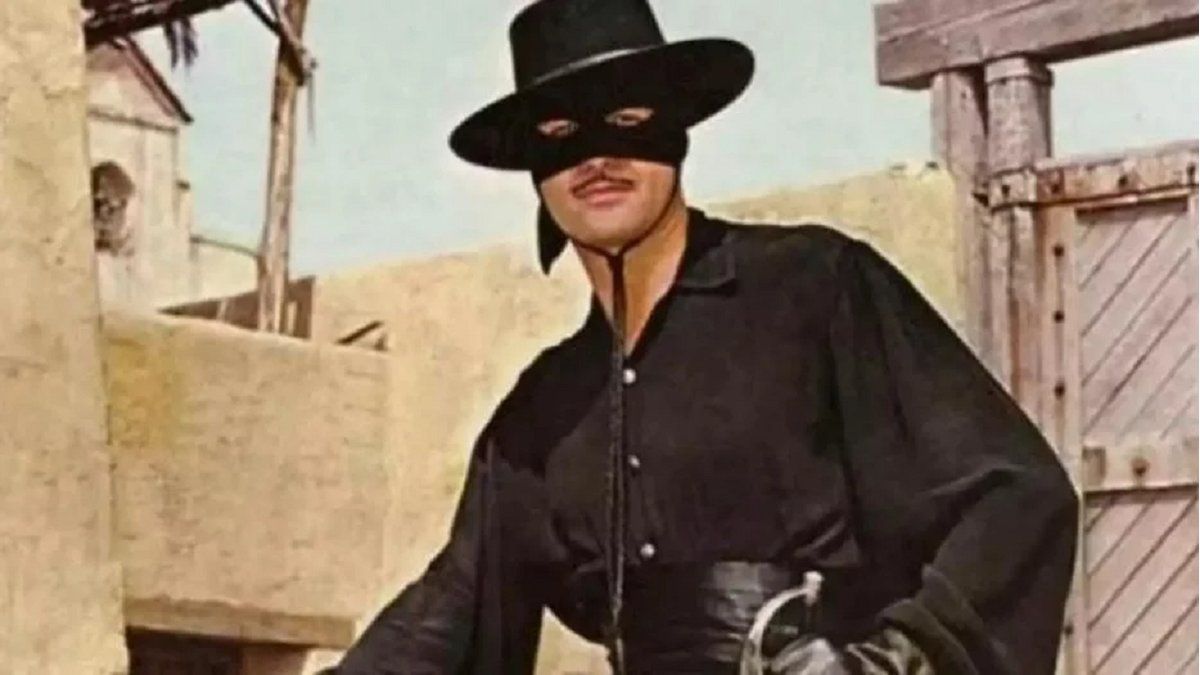“I like to talk a lot about the series El Zorro, he is a hero, an anarcho-capitalist, and he is demonized“And if the media were in Captain Monasterio’s pocket, he would be a terrible criminal,” said the President, attacking journalism in passing.
And he argued that “There was no paper money at El Zorro”so “when someone came from the port to trade, they brought gold, it was like a prison without a goalkeeper for criminals.”
“El Zorro fought these criminals and if the criminals had been successful, business would have fallen and their quality of life would have worsened,” he said.
“Zorro defended private property and the well-being of those who lived in the city. and he fought with Captain Monasterio who charged them taxes, a total hero, a fabulous character,” he said.
What was the protagonist of the series El Zorro like?
Zorro is an American television series produced by The Walt Disney Company in the 1950s, originally broadcast in black and white. The series is set in Los Angeles, California, in the 1820s, when it was part of the former Spanish California, where the people are oppressed by their rulers.
In this adaptation, Diego de la Vega is introduced (Guy Williams), a young man who returns to Los Angeles from Spain after receiving letters from his father. Diego learns of the tyranny of Captain Monastario (Britt Lomond) through the ship’s captain. Realizing the injustice, he understands that his father, Don Alejandro (George J. Lewis), has summoned him for fight against this oppression.
Despite having won medals for his fencing prowess in Spain, Diego chooses to conceal his sword skills. Instead, he adopts an intellectual and reserved attitude, moving away from the image of a determined man of action. His alter ego, Zorro, operates primarily at night, performing direct actions that Diego, in his public role, would not undertake. This disguise is not always easy for Diego, especially since it affects his relationship with his disappointed father..
The series can be seen on Disney+.
The true origin of El Zorro and the Mexican-American rivalry
The Fox first appeared in the short story The Curse of Capistrano by Johnston McCulley. The Curse of Capistrano It was published in 1919 in the pulp magazine All-Story Weekly.
The story is about Don Diego de la Vega, a young man from the New Spanish aristocracy during the Mexican period in California (1821-1846) in the missions, towns (such as San Juan Capistrano) and ranches of Alta California, who together with his deaf-mute servant, Bernardo, fights against the injustices committed by the authorities and defends the oppressed.
Due to public demand, McCulley wrote sixty additional Zorro stories beginning in 1922. The last, The mask of Zorrocame out in 1959, after McCulley had already died. In those writings, some changes were made regarding the main character and the plot of The Curse of Capistrano. Don Diego Vega’s name was lengthened to Don Diego de la Vega.
The negative portrait of Mexican rulersrepresented as a caste of evil antagonists, particularly despotic against the indigenous peasants, lacking the moral values that the Spanish nobility boasted through the character of El Zorro, allowed the United States to legitimize its invasion of Mexicoas well as its longer-term interference in the politics of its former rival for control of trade in America
Although all of McCulley’s stories took place in Los Angeles during the time of Mexican rule (between 1821 and 1846), most of the later adaptations of the Zorro story take place during Spanish rule, an environment that greatly distorts the romantic idea of the Spanish nobility that is the essence of the character.
Source: Ambito
I am an author and journalist who has worked in the entertainment industry for over a decade. I currently work as a news editor at a major news website, and my focus is on covering the latest trends in entertainment. I also write occasional pieces for other outlets, and have authored two books about the entertainment industry.




